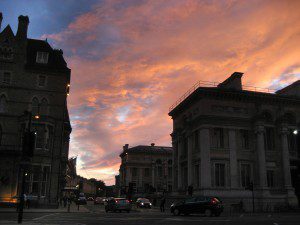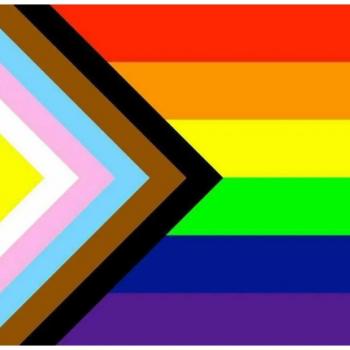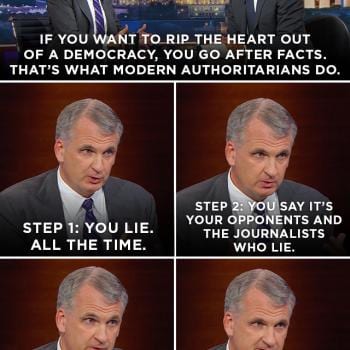In my last post I opened with the importance of orientation in our studies of Buddhist ethics. What we ‘bring’ to the study – even if it is simply in the wording of our questions – can often shape our research and understanding of the religion. Being conscious of this fact is an essential first step in avoiding the too-often egregious bias of Western scholarship on all things “oriental.”
I mentioned two foundations that serve the philosopher/ethicist in understanding Buddhist ethics, vis. anthropology and philology.
~
Only with these two foundations largely in place has the sub-discipline of Buddhist ethics been able to emerge in a meaningful way. And this emergence is a very recent event in Western academic history. So recent, in fact, that it is difficult to pinpoint even the decade of its origins. In this talk I shall survey some of the history of studies in Buddhist ethics. While that history extends well over 100 years, the massive expansion of work in Buddhist ethics in just the last 35 years will dominate my discussion this evening. I shall conclude by discussing some contemporary work and debates in Buddhist ethics and suggest where the field will hopefully go in the coming years.
1970s
In 1979 Frank Reynolds published ‘Buddhist Ethics: A Bibliographical Essay’ in the Religious Studies Review. His review begins, ‘Unfortunately, modern scholars have devoted relatively little attention to the study of Buddhist ethics. The works on the topic are neither extensive nor, for the most part, impressive’ (p.40). Remarking on Reynolds’ bibliographic essay, Charles Prebish notes that, ‘It is … revealing that over one hundred years of publications on Buddhist ethics could be condensed into eight journal pages despite Reynolds’ exhaustive and comprehensive search’ (1996, p.297). However, an early expansion of thought on Buddhist ethics did occur just as Reynolds’ article was going to press.
These early works coincided with the publication of two influential books on Comparative Religious Ethics. The first, simply titled Comparative Religious Ethics (1978) by David Little and Sumner B. Twiss, proposed a tripartite system for classifying religious ethics. This system, they proposed, could serve as a ‘descriptive universal’ (pp. 119 and 225), applicable to all religious systems in the service of understanding and comparing their distinctive features. The system, in brief, created a hierarchy, beginning at the most basic level of an agent’s situational application of basic norms. The second level of analysis comes at the validation of those norms; which for Little and Twiss would either be in the form of natural laws or duties (deontological) or ultimate goals (teleological). Finally, they suggested a category of vindication, looking at metaethical concepts and discussions, or the reasons given for accepting or rejecting certain validations. This tripartite theory is just one of many that have been proposed for better understanding religious, and specifically Buddhist, ethics.
In 1978, the year that Little and Twiss’ book came out, a panel on Theravādin Buddhist ethics was convened at the annual American Academy of Religion meeting. The next year, papers from that panel were published in a special ‘Focus on Theravāda Buddhist Ethics’ in the Journal of Religious Ethics. Four papers were given, each suggesting unique conceptual frameworks in order to account for the variety of ethical statements being examined. Harvey Aronson began the series by critiquing the kammic-nibbanic framework proposed by Winston King and adopted by Melford Spiro and instead suggested that we view Buddhist ethics through the categories of lokiya and lokuttara, or worldly and supramundane, activity. Frank Reynolds likewise criticized previous categories, this time going back to the sociologists Max Weber (1946) and Louis Dumont (1970), and suggested a four-fold analysis, again borrowing categories from within Buddhism. These are the path-winning monk, the ordinary monk, the bodhisattva king, and the ordinary Buddhist layperson, which he believed ‘provide a comprehensive yet differentiated overview of the norms which have informed and structured the component elements of traditional Theravāda societies’ (1979, p.20). Joanna Macy and Donald Swearer, the other two authors featured, also dove into the work of discussing and devising conceptual frameworks. In their introduction to the papers, journal editors James Childress and Frank Reynolds suggested that:
The debate is not whether the conceptual frameworks can and should be used, but their degree of precision and specification, their source, and their illuminative power. [And they warn that:] Hardened conceptual tools may break as much as they dig out, and inappropriate tools may damage the terrain. (Childress and Reynolds 1979, p.4)
Thus the 1970s promised to give way to work dealing with Buddhist ethics from a variety of conceptual frameworks. All that would be needed was greater philosophical acuity, coupled with ever more data from anthropologists, historians, and philologists. Or so it seemed.












